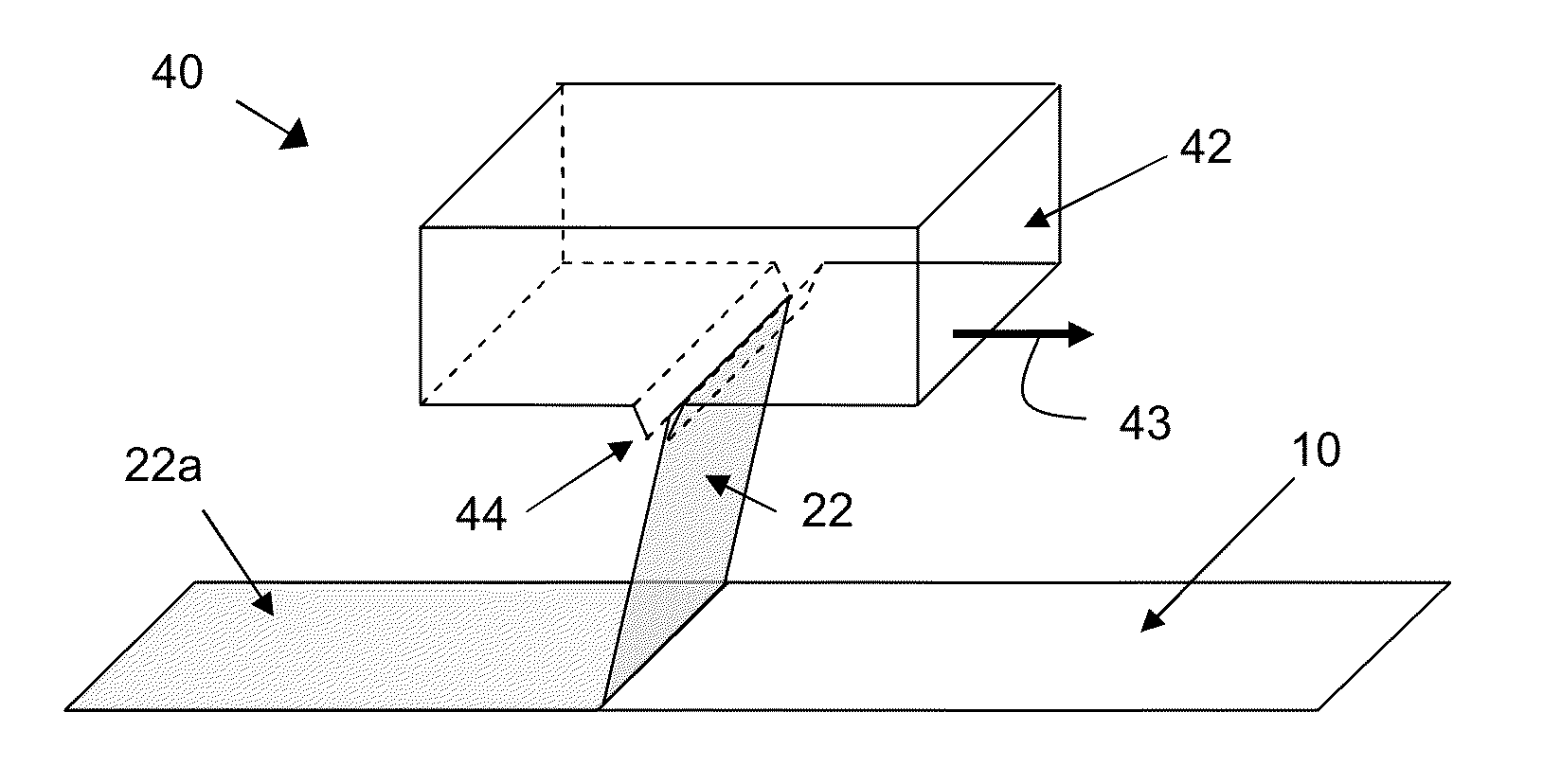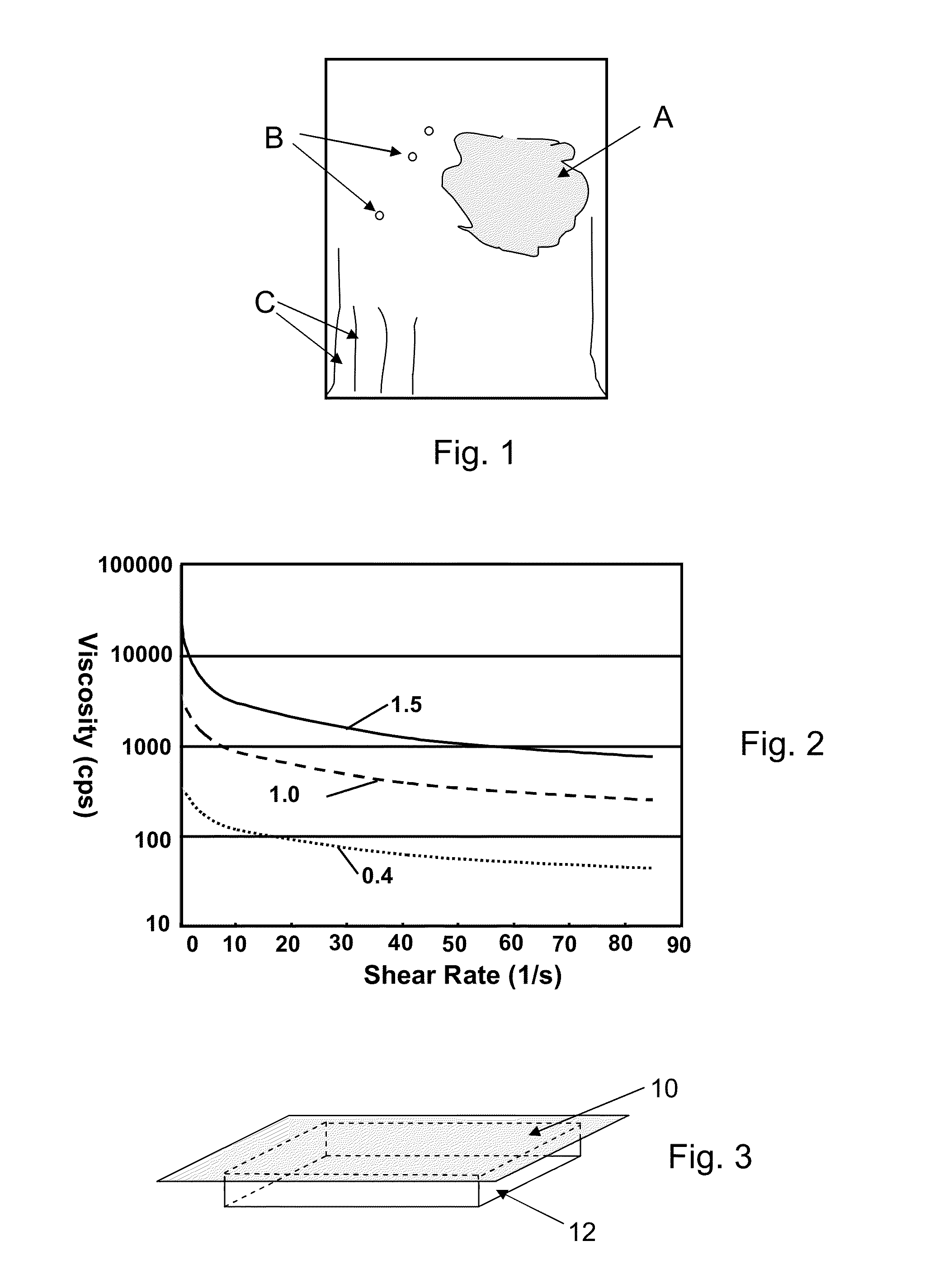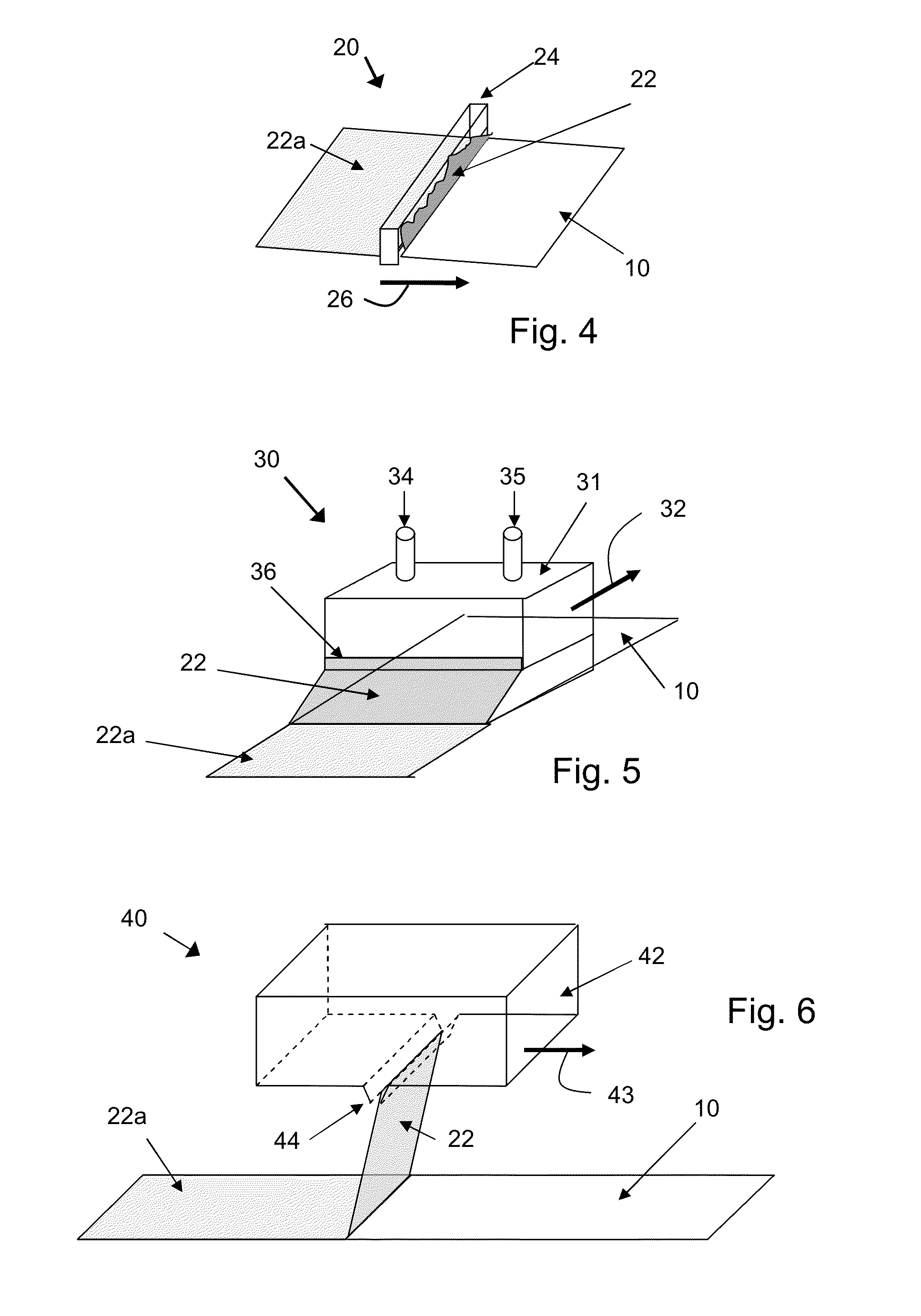Glass Etching Media And Methods
a technology of glass etching and etching media, which is applied in the field of glass manufacturing, can solve the problems of difficult to maintain etching efficiency over reasonable bath service intervals, impede the securing of uniform etching over large sheet surface areas, and the mobility of presently available etching media and methods, so as to reduce the variability of impact fracture strength of glass
- Summary
- Abstract
- Description
- Claims
- Application Information
AI Technical Summary
Benefits of technology
Problems solved by technology
Method used
Image
Examples
Embodiment Construction
[0026]While the etching media and methods of the present disclosure may be widely applied to the strengthening and / or surface finishing of glass articles of widely varying composition and configuration, they offer particular advantages for the treatment of thin (<2 mm thick) aluminosilicate glass sheets for advanced information displays. Such displays generally include thin alkali aluminosilicate glass sheets that are capable, with appropriate ion-exchange strengthening and etch resurfacing, of providing extremely high resistance to bending and impact breakage as well as excellent resistance to visible damage from repeated scratching and abrasion. Thus many of the following descriptions and illustrative examples are directly applicable to the processing of such sheets even though the utility of the etching media and methods of the present disclosure is not limited thereto.
[0027]Examples of important applications for such media and methods include use for the etching of glass sheets ...
PUM
| Property | Measurement | Unit |
|---|---|---|
| Fraction | aaaaa | aaaaa |
| Percent by mass | aaaaa | aaaaa |
| Viscosity | aaaaa | aaaaa |
Abstract
Description
Claims
Application Information
 Login to View More
Login to View More - R&D
- Intellectual Property
- Life Sciences
- Materials
- Tech Scout
- Unparalleled Data Quality
- Higher Quality Content
- 60% Fewer Hallucinations
Browse by: Latest US Patents, China's latest patents, Technical Efficacy Thesaurus, Application Domain, Technology Topic, Popular Technical Reports.
© 2025 PatSnap. All rights reserved.Legal|Privacy policy|Modern Slavery Act Transparency Statement|Sitemap|About US| Contact US: help@patsnap.com



